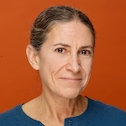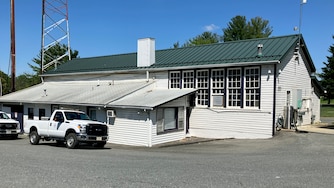With a $1 billion grant from Bloomberg Philanthropies, the Johns Hopkins University will offer free tuition to medical school students beginning this fall and offset the cost to others training in medical fields.
The grant is the latest one awarded by the foundation run by Michael Bloomberg, a Johns Hopkins graduate who has now steered $4.55 billion to the university and the hospital complex in East Baltimore.
Johns Hopkins’ Charlotte R. Bloomberg Children’s Center and the Johns Hopkins Bloomberg School of Public Health already have the family name attached. And the latest gift is among largest single contributions made to any university ever, though at least one has been larger — a $1.8 billion gift to Hopkins also by Bloomberg Philanthropies.
The new medical school grant is intended to make training available to students from low-income and diverse backgrounds. With shortages of doctors, nurses and public health workers, the gift also aims to fill needed positions across the country.
Cost has become a major barrier for many. The grant will cover tuition for medical students who come from families earning under $300,000, about 95% of U.S. households. It will also cover living expenses.
Johns Hopkins has long had top-ranking medical and nursing schools, in demand for the education but, officials acknowledge, potentially financially out of reach.
Read More
“As the U.S. struggles to recover from a disturbing decline in life expectancy, our country faces a serious shortage of doctors, nurses, and public health professionals — and yet, the high cost of medical, nursing, and graduate school too often bars students from enrolling,” said Michael Bloomberg, founder of Bloomberg Philanthropies and Bloomberg LP, in a statement.
“By reducing the financial barriers to these essential fields, we can free more students to pursue careers they’re passionate about — and enable them to serve more of the families and communities who need them the most.”
The average cost of tuition and fees a year exceeds $41,000 for in-state students at public medical schools and $58,000 for out-of-state students. Private medical schools, such as Hopkins, average $60,000, according to the Association of American Medical Colleges.
“Transformational gifts of this size are rare, but a growing number of medical schools are using large donations to reduce the debt level of their graduates,” said Dr. Alison Whelan, the medical college association’s chief academic officer. “We hope that these initiatives will encourage more students to consider applying to medical school, especially if affordability was previously a barrier.”
She said most students remain unable to fully cover tuition.
The cost of a year at Hopkins is at the higher end, though many already receive some financial aid.
But it’s not just paying the cost that officials say has been a barrier for many students. They take out loans and end up with significant debt. The median owed nationally upon graduation in 2022 was $200,000, a number that has greatly affected what kind of practice doctors enter and where.
Average debt of Hopkins’ graduates is $100,000, less than the national burden but still enough to steer doctors’ choices, said Ronald Daniels, president of the Johns Hopkins University. He said he and others had been thinking about how to relieve that “stress” for years.
Kyle Patel, an incoming second year medical student, was just about to go to bed when he saw the email announcement. Patel is spending his summer in India working on a medical research project. He immediately texted his classmates and his parents, who were “shocked” by the news.
Not having to pay off thousands of dollars of student loans takes a huge weight off his shoulders, Patel said. He wants to go into primary care and work for nonprofits and the government — a less lucrative career than other high-paying specialties.
“It gives me a lot of relief of being able to do a job and not have to worry about making lot of money to pay off the debt,” Patel said. “A lot of people aren’t incentivized to go into that field because of the debt.”
He paid for his first year of medical school with a combination of financial aid, help from family and loans.
The news is “quite the birthday gift, a very generous one,” said Daniel Zheng, a rising second-year medical student who turns 25 this week. He found out about his free tuition through the class’s Facebook group, where students were posting in delight as soon as the announcement was made.
“I hope initiatives like this can help avoid a class gap between doctors and patients. People need doctors who can understand where they’re coming from,” said Zheng, who sees free tuition as a good way of achieving that goal and helping students from all backgrounds break into the medical field.
When he found out, he called his parents. As an Asian American student, he said he has often felt the tension between his parents wanting to do everything they can for him and his own desire to be independent.
For his first year, his parents covered half his tuition and a scholarship from Hopkins covered the rest. Tuesday’s news “will definitely take weight off everyone’s shoulders,” he said.
Zheng has wanted his parents, who are in their 70s, to retire for some time. Now, he said, “retirement is a little bit easier for them.”
Many more students will get free tuition plus living expenses because they fall under the $300,000 cap. Based on current enrollment, about two-thirds of students would get a free ride.
“The assistance will increase the scope of choices those graduating from medical school enjoy, what specialties they go into, what areas of country they want to practice in,” Daniels said. “They will have more flexibility to go into specialties or go back to a part of country where incomes are not as great as if they stayed in an urban center.”
The projected shortfall of physicians is expected to to reach 86,000 by 2036, a report published this year by the Association of American Medical Colleges found. Some areas, such as primary care, have long been in shortest supply because they pay comparatively less. Rural parts of the country are also particularly underserved.
Several other medical schools pay tuition for many of their students now, including the Albert Einstein College of Medicine in New York, which will cover the cost for all students with a $1 billion grant from a former faculty member earlier this year.
A 2019 survey published in the journal Family Medicine found paying their way does not alone translate into doctors choosing to pursue primary care, for example. But Daniels said the hope is the graduates, who must complete a residency before practicing, will still have more choice.
“We’re hoping that by providing this assistance, students can just pursue their passion and have greatest impact,” Daniels said.
There is a similar nursing shortage nationally and in the state, which was made worse during the coronavirus pandemic. The Maryland Hospital Association has reported that one in four nursing positions is vacant.
Hopkins had already added additional assistance in recent years. But costs have remained a barrier to the profession, officials said.
“This historic gift will allow nursing students to graduate with less debt so they can move onto their life-changing careers with more ability to focus on the health of their patients, families and communities,” said Sarah Szanton, dean of the Johns Hopkins School of Nursing.
Baltimore Banner interns Saul Pink and Rafael Escalera Montoto contributed to this report.





Comments
Welcome to The Banner's subscriber-only commenting community. Please review our community guidelines.